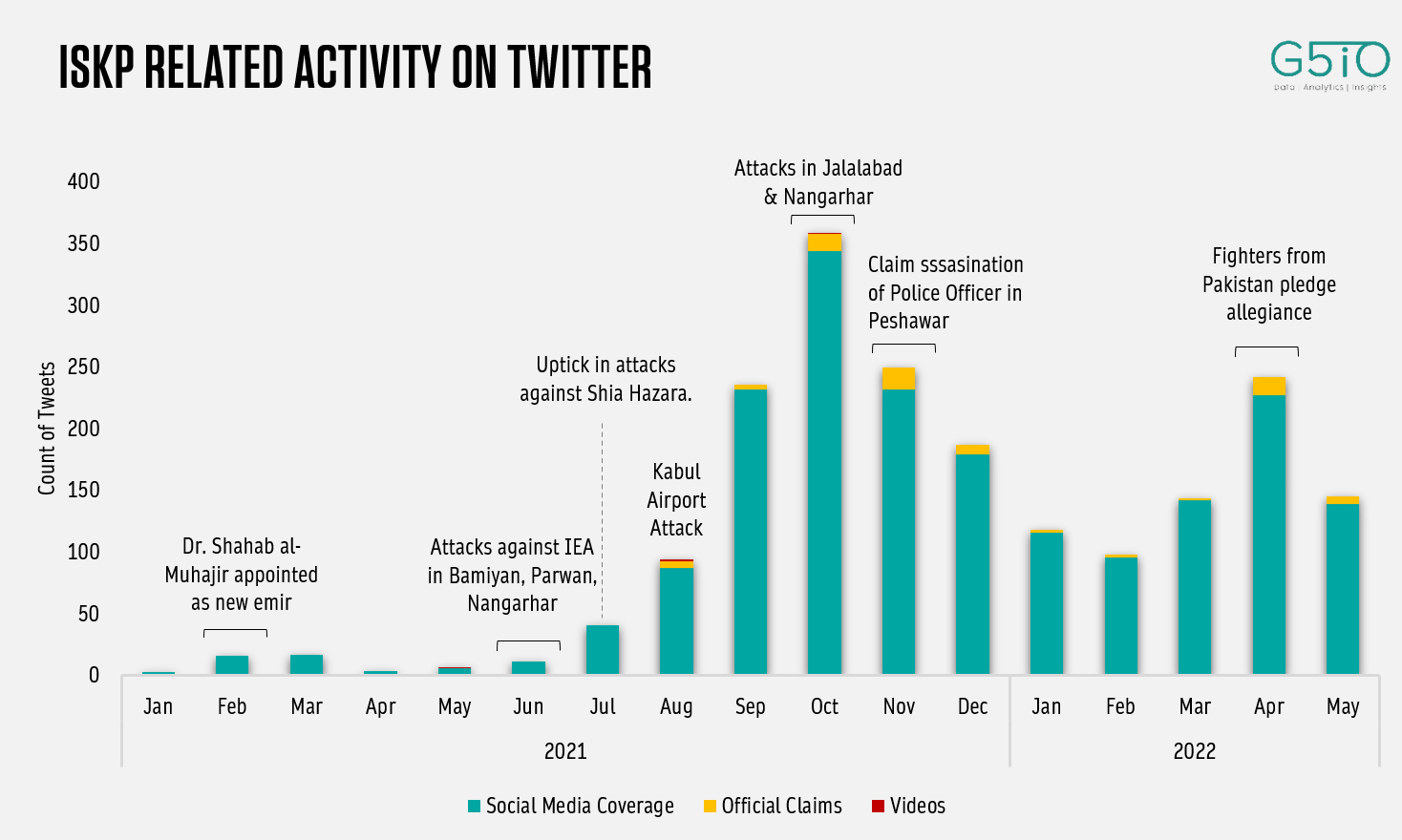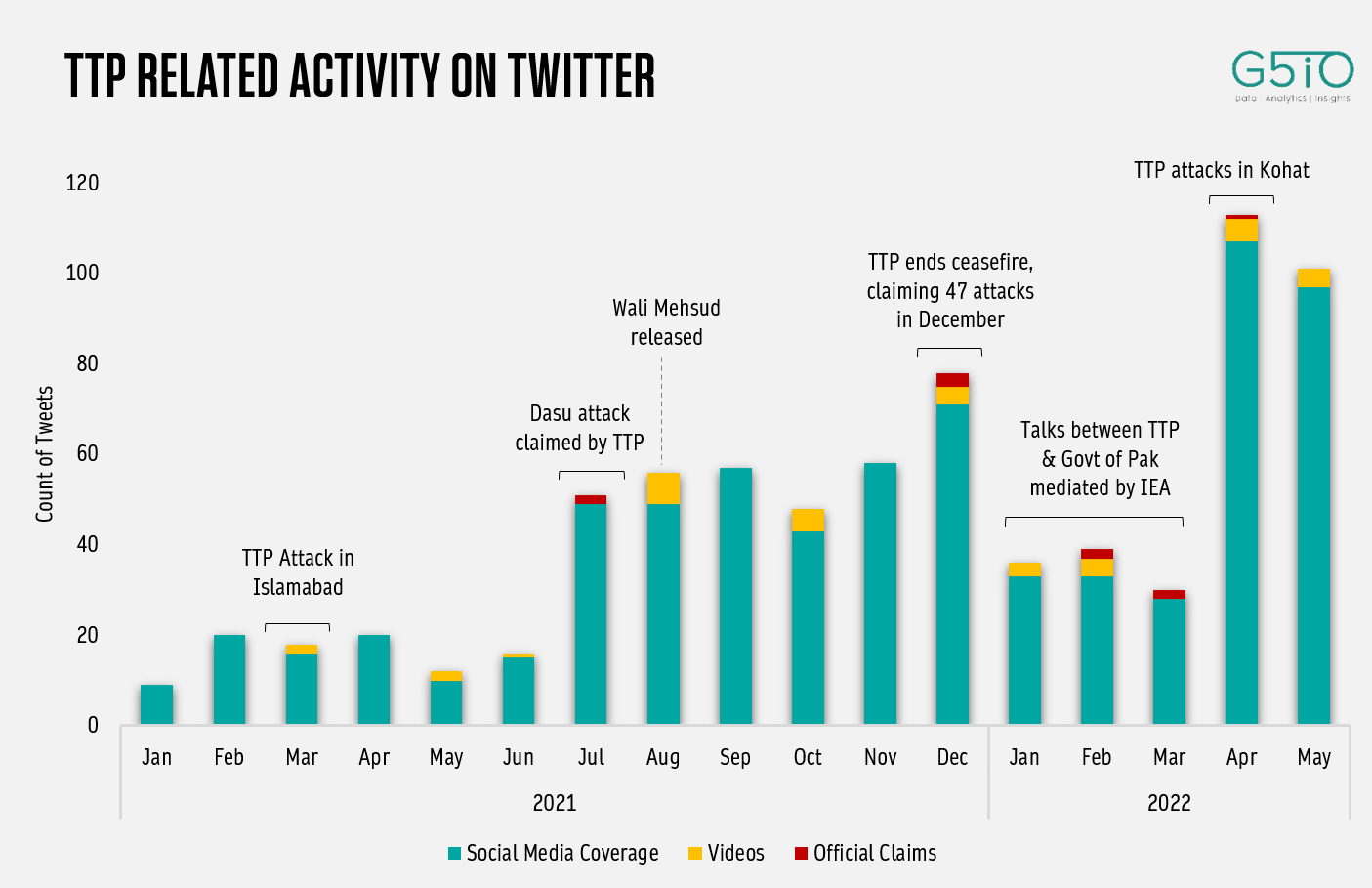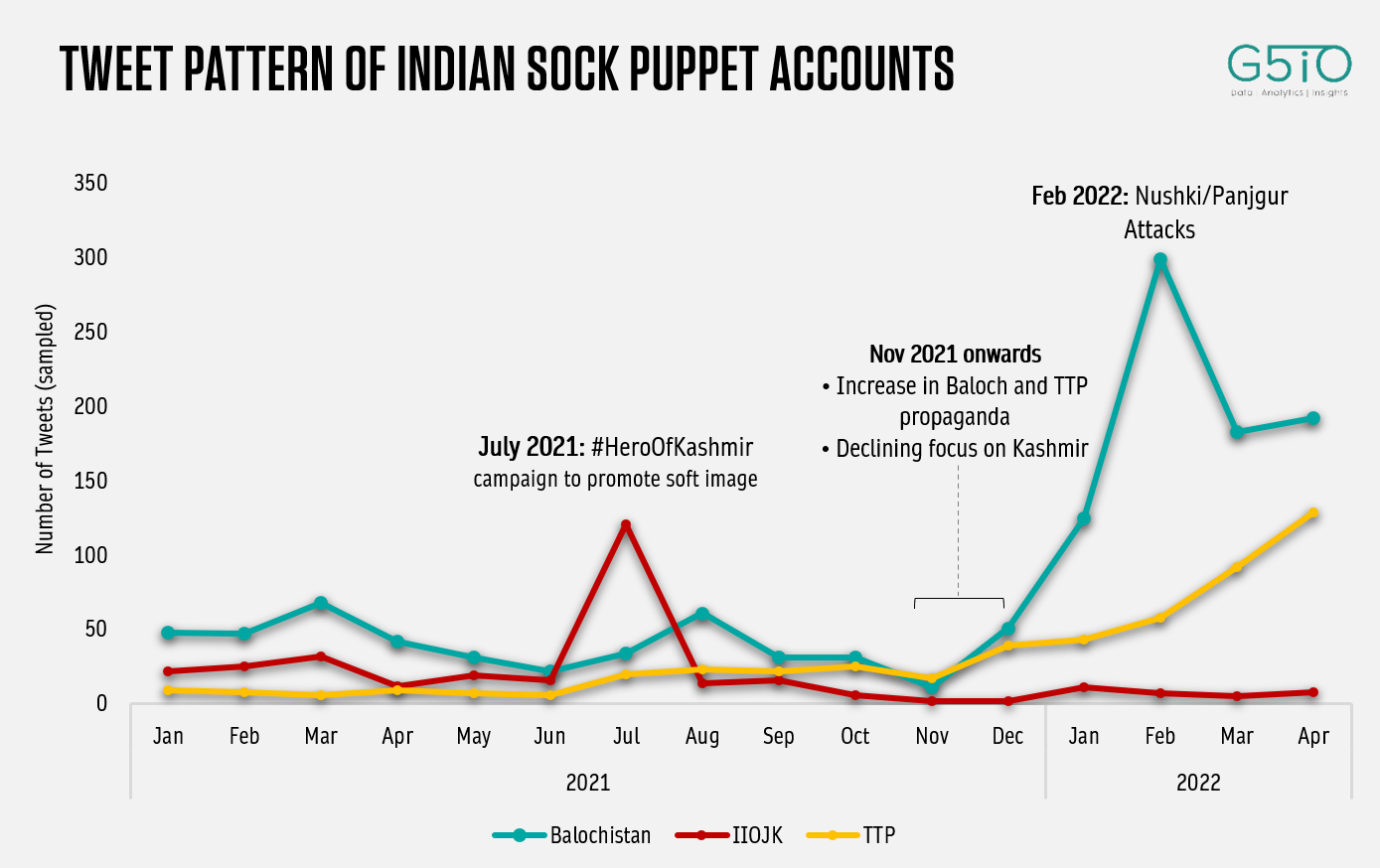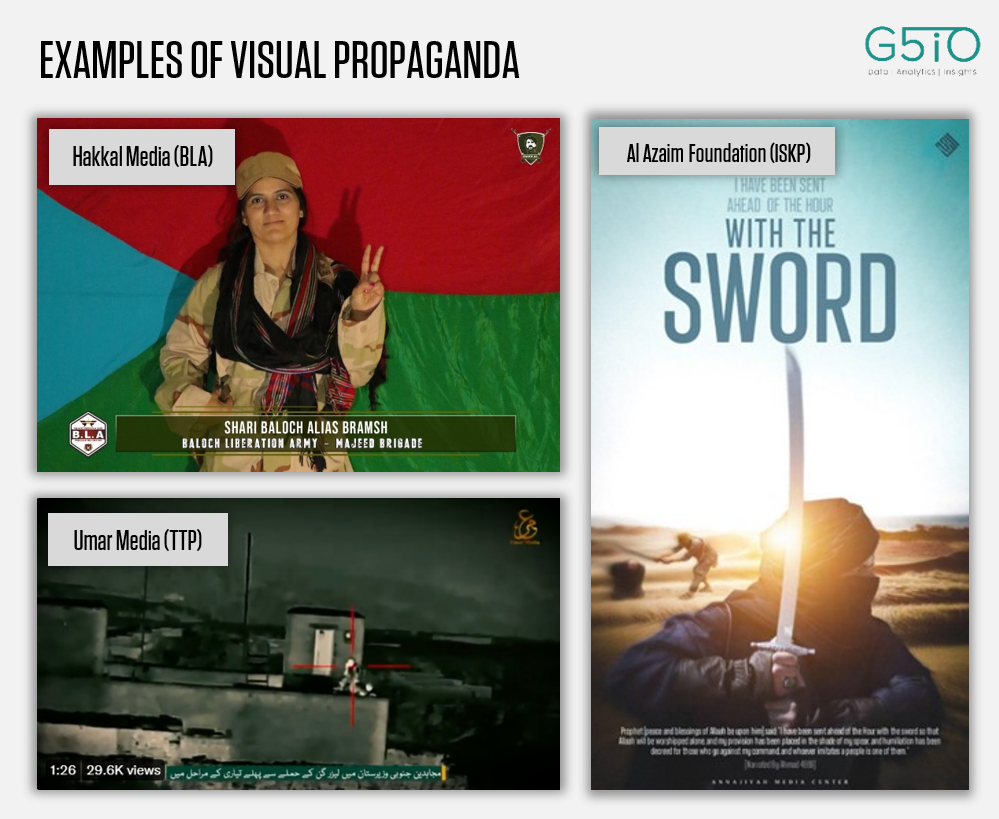Overview:
In the last few years, there has been a sharp surge in terrorist presence online with several terror networks leveraging social media for recruitment and propaganda purposes. G5iO mapped the social media presence of three prominent terrorist networks currently operating in Pakistan comprising the (a) Tehreek-e-Taliban-Pakistan (TTP), (b) Baloch Liberation Army (BLA) and (c) Islamic State – Khorasan Province (ISKP). Our goal was to see how these networks deployed their Info-Ops online to not only amplify their on-ground activities, but also use increasingly sophisticated tactics and messaging for specific audiences.
Methodology:
In order to better understand these networks, we focused on analyzing their (1) timing and activity patterns, (2) the tools and techniques used and (3) key narratives employed by them across various social media platforms. These were based on their activity and posts from their ‘official’ Telegram and Twitter accounts, including their use of sophisticated imagery, videos and specifically targeted statements.
Our data comprised around 810 posts from the BLA’s official Telegram channel (Hakkal Media), along with key accounts associated with the TTP and ISKP comprising a total of 12,775 tweets dating back to Jan 2021. In addition, we also analyzed around 9300 tweets from accounts linked to Indian dis info networks targeting Pakistan who actively amplified the above terror networks’ info ops.
Analysis:
Baloch Liberation Army (BLA):
BLA’s online presence increased dramatically following the US withdrawal from Afghanistan. Their online propaganda deploys content with an emphasis on guerilla style resistance steeped in ethno-nationalist and revolutionary narratives. In addition to Facebook and Twitter, BLA has also increased its presence considerably across several mainstream social media platforms including Instagram, Tik Tok and Telegram via a broad ranging network. The graph below maps the BLA’s ‘officially’ declared online activity via their most popular Telegram channel (@Hakkal) in relation to their on-ground operations over the last 17 months.

Islamic State – Khorasan Province (ISKP)
ISKP has also refocused its efforts particularly since the US withdrawal from Afghanistan to increase their influence and expand their operations into Pakistan. Their online presence, while backed by their pervasive global network, is portrayed as that of a franchise posting recruitment videos and pledges of allegiance by Pakistani based militants. Their goal is to tap into Pakistan’s existing militancy landscape and co-opt local outfits into carrying out low-risk yet high impact activities to amplify their scant presence on the ground. Consequently, ISKP’s messaging remains the most targeted, deploying region-specific languages and content aimed at expanding its international ‘brand’ for recruiting a specific local audience – i.e., mostly from other terror networks.

Tehreek-e-Taliban-Pakistan (TTP)
The TTP’s online presence while having fluctuated over the past decade, has also witnessed a strong resurgence over the last few months. This too coincides with the US withdrawal from Afghanistan, following which there has been a concerted effort to amplify its presence. This has occurred both in terms of the number of posts related to its activities, as well as the use of sophisticated info graphs, ‘nasheeds’ (religious hymns) and animated videos. Interestingly, most of these appear directly inspired by the propaganda machinery of other major terrorist organizations such as ISIS and Hezbollah, while attempting to further bolster its credibility and ties to the Islamic Emirate of Afghanistan headed by the Afghan Taliban.

Indian Info-Ops Amplifying Terrorism:
It is worth noting that while the above networks have a limited capability in ‘officially’ pushing their narratives online, there has been a near consistent and coordinated effort from other networks in helping them amplify their narratives. The most prominent of these comprise self – proclaimed info-warfare accounts based out of India, which provide highly relevant insights into how the above terror networks’ info-ops are conducted and proliferated.
For instance, as per the graph above we can see that Indian Info-Ops focusing on Pakistan have gone through a strategic shift in the last few months and have adopted a multi-faceted strategy. This entails promoting a soft image of Indian Military operations in illegally occupied Kashmir on the one hand (via emphasizing development initiatives), while concertedly amplifying the BLA’s & TTP’s activities within Pakistan on the other. The graph also shows that this divergence took place particularly since November 2021 onwards, with coverage of these activities peaking around February 2022.

Propaganda Through Imagery
Overall, while there has been a noticeable change in the social media activity patterns and the various mediums being employed, there has also been a noticeable shift in the narratives being used which sets apart each of the above analyzed terror network from one another. As such, the use of imagery for narrative propagation has taken center stage as BLA, TTP and ISKP are increasingly relying on digital media for their propaganda, branding and recruitment.
For example, the BLA’s resistance narrative, while bolstered by a significant upsurge in attacks has been amplified via increasingly sophisticated videos and imagery aimed at valorizing and humanizing its operatives as folk heroes – and that too along a specific ethno-national identity.
The TTP’s emphasis in contrast has been on balancing its presumed ‘battlefield, tactical and ideological superiority’ against its newfound desire to rebrand itself away from a ‘terrorist or militant’ organization. Instead, to project itself as more of an ethnic resistance front fighting for the “rights” of its people and against an “oppressive” government. – similar to the resistance narrative being pushed by the BLA.
In contrast, the ISKP while drawing on its years of expertise and vast resources aims to project itself as a trans-national ideological movement, premised on revivalism against a global rather than regional or national status-quo. Its emphasis being on projecting itself as a hardline alternative especially to already radicalized elements disenfranchised with their existing groups.

Conclusion
Summing up, our analysis shows that:
- There has been a surge in terrorism-related propaganda targeting the Pakistani digital space and audience.
- The varying, techniques, mediums and narratives point towards increasingly sophisticated and dedicated teams carrying out the above with very specific goals and expertise
- The opportunities offered by the above information ops remain ripe for regional spoilers to further amplify and lend greater legitimacy to the above tactics and narratives
- Greater awareness is needed to not only counter all these efforts but to prevent and report their proliferation – especially since these represent a clear violation of each of the above mentioned social media platforms’ rules and policy guidelines.

